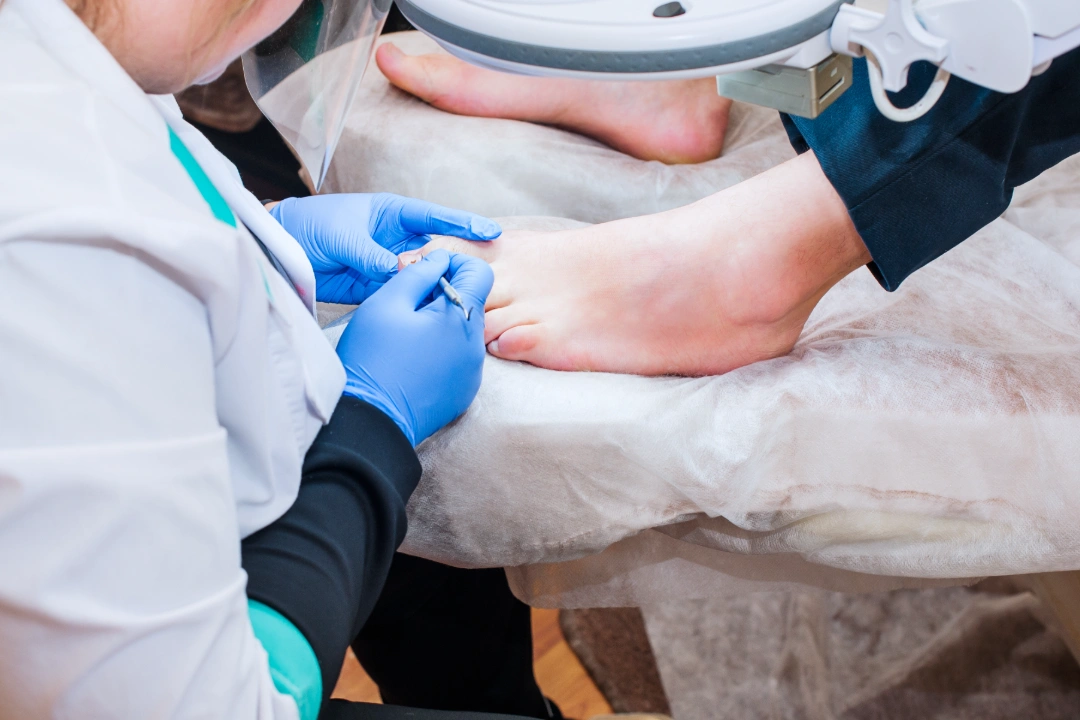
Nail surgery, also known as nail avulsion or nail removal surgery, refers to surgical procedures that address nail issues and conditions, from benign conditions, such as ingrown nails and damaged nail beds, to more serious ones like nail tumours.
These procedures are generally minimally invasive and can involve removing parts of the nail, or tissues surrounding the nail, and done under local anaesthesia. Most times, the affected nail can grow back normally. However, when treating chronic or serious nail conditions, it is important to set realistic expectations and understand risks on recovery and regrowth of the nail, some procedures may result in total loss of the nail.

Nail surgery is generally recommended when you experience:
In some cases, such as with tumours, a nail biopsy is often performed prior to the nail surgery. This is a diagnostic step to identify the nature of the growth. Misdiagnosis and removal of malignant tumours may cause it to come back or become more aggressive and hence life threatening. Reach out to us if you have any concerns of any nail abnormalities that necessitate a biopsy or diagnosis.
Treating serious or chronic nail conditions may necessitate extreme measures. Your dermatologist should inform you on what to expect for the surgical treatment. It is important that you understand the side effects of certain nail procedures such as nail loss.
The general process of a nail surgery is as follows:
Pre-surgery
During your procedure
Post-surgery
It is not advisable to drive yourself home after a surgery to avoid unnecessary trauma to your nails, whether finger or toe nail. Once home, the following instructions are highly recommended for optimal healing [4]:
As with any surgical intervention, risks are still present in nail surgeries. It is important that you understand the risks of nail surgeries and have a realistic expectation on the final results post operation. The most common risks include:
However, these risks can be significantly reduced by proper techniques and post-operative wound care. It is important to communicate your doubt and concerns with your doctor as you recover from your surgery.
At Livingstone Dermatology, we are dedicated to providing personalised care for nail conditions. Schedule an appointment with us today for a comprehensive diagnosis and personalised treatment plan.
Can I shower after nail surgery?
Yes, peptides and growth factor serums can be layered with other skin care ingredients such as retinols. Using these ingredients together may also enhance the anti-ageing effects. However, it is best to consult your dermatologist before mixing your skin care to ensure optimal results.
Will my nail grow back after nail surgery?
Depending on the type of surgery, your nail can grow back. A total matricectomy will result in permanent nail loss.
How long does it take for the nail to grow back?
If a total nail removal is done, it may take anywhere between 4 to 6 months for it to grow back as long as the nail matrix is intact.
Whether you’re dealing with a specific skin concern or seeking to enhance your natural beauty, Livingstone Dermatology is here to guide you on your journey to healthy, radiant skin.
Schedule an appointment today and experience the Livingstone standard of care in a welcoming, professional environment.